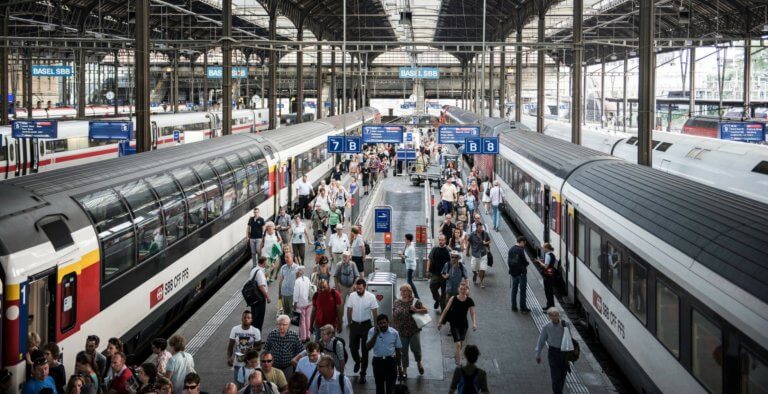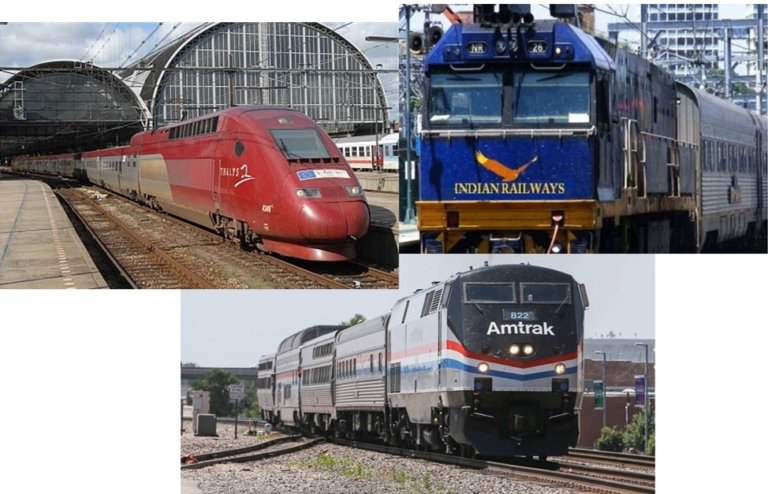But politics diplomacy and economics are the main hurdles
By Conall Mac Aongusa, Transport Planner, member of RailHow Team, 29/07/2019
The economic potential of developing new transport and infrastructure corridors is always an almost irresistible attraction for politicians and political leaders. International corridors have an added attraction of stimulating economic growth and exchange across borders and cultures but by their nature they require agreed resolutions to differences over international issues and their development can be slowed down by politics, diplomacy, economics and sometimes even engineering issues.
Railway infrastructure projects in particular have enormous pulling power for politicians because of their potential to link cities together, to open up economic opportunities for export ports and by lowering the cost of transport of goods and people and enabling people to access opportunities for work and trade.
The project to develop the East Coast Rail Line (ECRL) in Malaysia has been recently re-launched by the Malaysian Government to much fanfare. It is an ambitious project of over 640km of twin track electrified railway which will link the Port Klang near the capital Kuala Lumpur on the west coast with the ports on the less developed east coast and the border with Thailand. It opens up opportunities to stimulate the development of the north eastern regions of Malaysia and links them to the ports which is a key support to the export potential of the Malaysian palm oil industry amongst other opportunities identified by the Malaysian Government.
The project which has been in development since 2012 was suspended by the new Malaysian Government in July 2018 because of concerns over its costs and the commitments entered into by the previous regime with a Chinese-led consortium. Less than 12 months later the project has been relaunched with a cost reduction of over 30% and a promise to dramatically increase the participation of Malaysian companies and resources in developing the line allied to a concerted capacity building and technology transfer programme for Malaysian Railways.

The ECRL is a not only significant project for Malaysia but as part of the broader ambitions of Asian nations it is a critical project to strengthen the links between the Malay peninsula with Singapore in the South and Thailand, Vietnam and China to the North.
The Pan- Asia Railway as well as the ASEAN Connectivity Plan and the Chinese One Belt One Road Initiative all overlap to a considerable extent in identifying the potential of a developed rail network to unlock the economic and trade potential of south and South east Asia. A pan-Asian rail network has been on the drawing board for decades and is promised in several recent regional pacts. Some routes were mapped out more than a century ago as the British and French carved tracks through the jungle in an ambitious “Great Game of Trains” that was meant to boost trade among their colonial holdings in Asia and counter Russia’s Trans-Siberian railway.
Now a new game is under way, and China is the key player. The Singapore to Kunming Railway Line is an ambitious project that was first envisaged in colonial times to link the Chinese city of Kunming with ports in Singapore and Bangkok which are closer to China’s vast southwest region than China’s own eastern ports. A historical legacy is being revived but the challenges to developing international railway corridors remain as complex as they did over one hundred years ago.

However, in a more connected and competitive globalised world the strategic approaches to unlocking the potential are more comprehensive in their scope. The OBOR project is vast in its scope and ambition in proposing to link East and West. Meanwhile, the ASEAN Connectivity Plan identifies the need for a multi-pronged economic strategy to unlock the full potential of the new connectivity initiatives. It identifies the need for comprehensive multilateral agreements over development in areas such ICT, economic cooperation, labour movement and customs coordination. This requires significant efforts in diplomacy and international coordination of which railway development is only one part. The technical challenges including differences in railway standards and gauges must also be addressed through an alignment of common international interests in a shared outcome.
Malaysia is showing leadership in developing the ambitious ECRL line once the political and economic complications in the development finance agreements with China have been ironed out. The potential that this project will unlock not only in Malaysia but also in the entire South Asia Region is enormous. But to unlock that potential requires considerable work in diplomacy politics and economic cooperation and coordination between all the countries in South Asia.
The challenges facing the European Union in coordinating the development of major trans-European railway corridors provide a contrast to the context, approach and challenges of railway development in Asia. But there is little doubt that in each region the economic and social development potential to be unlocked by the development of railways is enormous.


